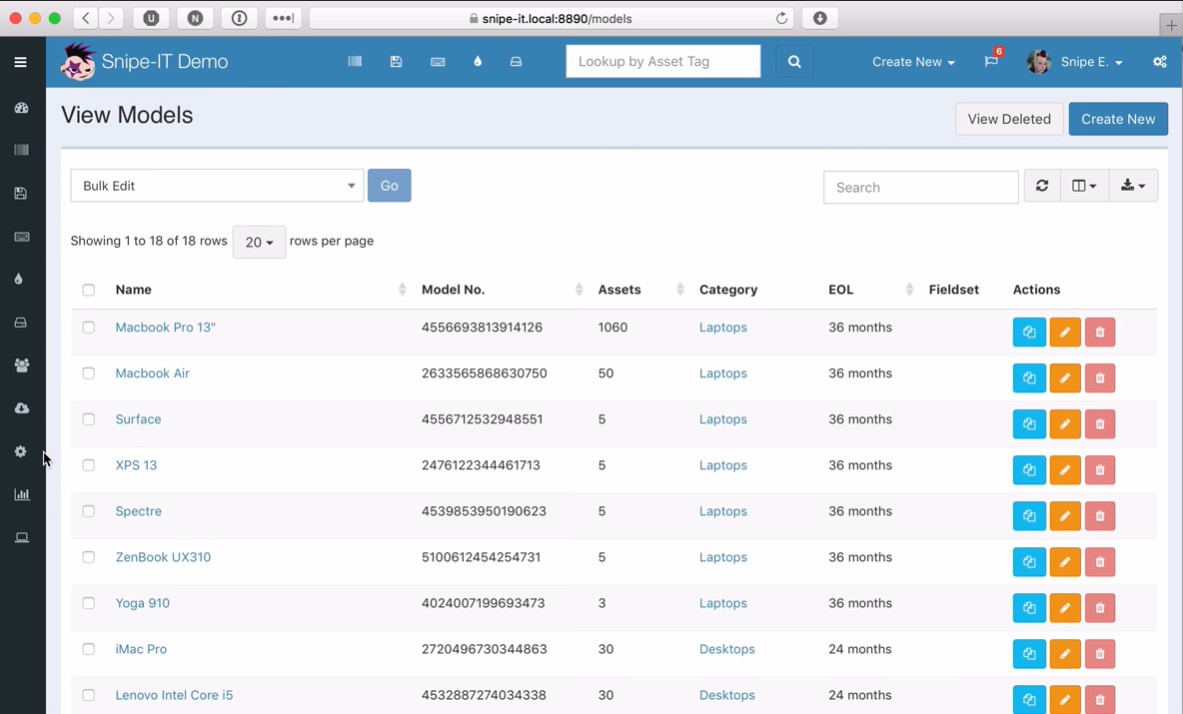

- #ASSET MANAGEMENT SOFTWARE CATEGORIES MANUAL#
- #ASSET MANAGEMENT SOFTWARE CATEGORIES FULL#
- #ASSET MANAGEMENT SOFTWARE CATEGORIES REGISTRATION#
- #ASSET MANAGEMENT SOFTWARE CATEGORIES CODE#
#ASSET MANAGEMENT SOFTWARE CATEGORIES MANUAL#


#ASSET MANAGEMENT SOFTWARE CATEGORIES REGISTRATION#
Need help? Get in Touch ›Įxplore Product Registration & Tracking ›
#ASSET MANAGEMENT SOFTWARE CATEGORIES CODE#
However, cloud-based products will be ideal for organizations that don’t want to take on the IT overhead associated with on-premise technology and want a higher degree of accessibility, including functions like mobile applications.Consumer Product Registration & Tracking Labels.ĭurable, QR code labels that enable product tracking and easy product registration for consumers. On-premise is preferable for very security-minded organizations who want a high degree of technical control over their EAM software. Cloud-Based: SaaS-model EAM software is becoming the norm, but there are still plenty of on-premise options. Some enterprises may instead benefit from a more customizable platform in general over industry-specific capabilities. Many leading vendors will offer prebuilt industry-specific features, but not all industries can utilize these features. Vertical-Specific Support: Consider what customizations are available to the enterprise’s specific industry. Integrations: How well does each product integrate with the enterprise’s preexisting ERP, accounting, and facilities management software? Make sure each vendor supports integrations with the specific software the organization already uses, as the specifics of those integrations will have a large impact on how frictionless the asset management workflows are across the enterprise. When comparing different enterprise asset management software, consider these factors: These extended features allow EAM software to encompass most or all of the asset management functions that enterprises need to track and conduct.Įnterprise Asset Management (EAM) Software Comparison Some EAM software may also include some financial management capabilities specific to enterprise assets, such as procurement, accounts payable, etc. However, EAM products go beyond simple maintenance tracking to include workflow management, asset lifecycle planning, supply chain management features, skills management for maintenance labor, and other features. Computerized Maintenance Management SystemsĮAM software is often associated with CMMS products because they both emphasize serving maintenance process needs of enterprises. Recent advancements have normalized analytics to allow for more intelligent planning, scheduling, and preemptive maintenance/asset lifecycle progression.Įnterprise Asset Management vs. hospitals and healthcare, manufacturing, government, energy, transportation, etc.). Because capital varies widely across industries, EAMs tend to be configurable and/or specialists tailored to the needs of particular industries (e.g.
#ASSET MANAGEMENT SOFTWARE CATEGORIES FULL#
EAM software improves safety compliance and streamlines audit processes, as well as simplifying inventory management and asset lifecycle planning.ĮAM products centralize the full lifecycle of asset management, particularly maintenance cycles and audit reporting. These assets include both fixed assets, such as buildings or machinery, as well as mobile assets like vehicles or even personal devices in some cases. What is Enterprise Asset Management (EAM) Software?Įnterprise Asset Management Software (EAM) automates the lifecycle management of physical assets in use across the enterprise. Insurance Policy Administration Systems.Integration Platform as a Service (iPaaS).


 0 kommentar(er)
0 kommentar(er)
